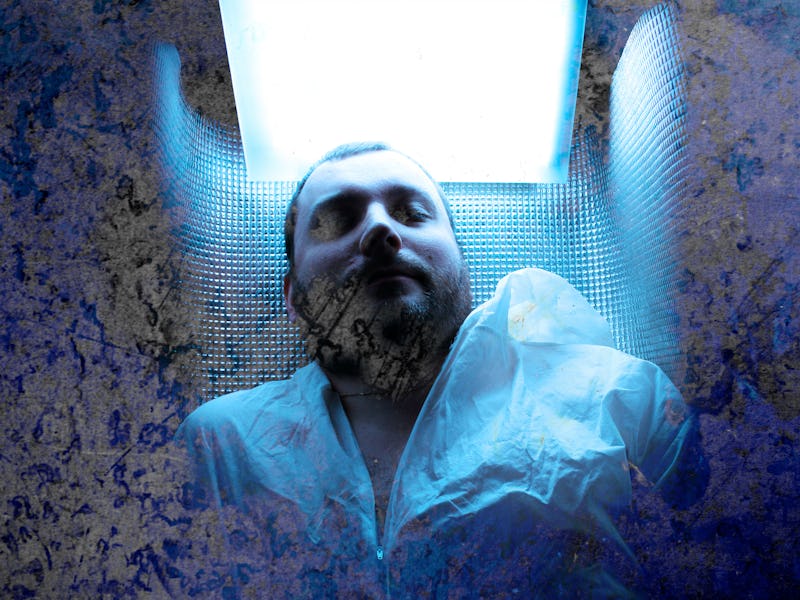Cryogenic Sleep Is Our Best Hope for Interstellar Travel
Scientists are closer to figuring this out than you think.

Science fiction has romanticized a long, cold sleep as the best way to fuse space-time in our future adventures. In Interstellar, Prometheus, and The Fifth Element, hypersleep pods keep travelers from aging and efficiently use precious energy levels for both travelers and spacecraft. In fact, hypersleep pods are a key element for Passengers, where colonists whirring through space towards a far-off colony are put to sleep for 120 years.
Short of a warp or em drive, there is no viable option for keeping humans alive during long-distance space travel, making cryogenic sleep’s possibilities the most tempting, promising way to snooze our way to another planet.
Here’s how cryogenics works: Bodies are preserved through the process of vitrification. An antifreeze agent is added, replacing water in the cells. The tissue is then cooled to -220 degrees Fahrenheit, but instead of crystallizing into ice, the chemicals clump together and become solid, molecularly similar to glass. The new glass form prevents the cells from bursting and, theoretically, holds them in stasis forever.
A person can’t legally be cryogenically frozen until they’re legally dead, presenting an additional problem for the doctors of the future: They’ll have to rewarm the bodies, then bring them back to life.
Here’s where it gets a bit squishy: Should cryogenics work, there’s reason to believe that a body would not have to be brought entirely back to life. Legal death and total death are not exactly the same thing; the idea is that if you can be frozen after your heart stops but before brain function has stalled, there might be enough going on up there still to permit a return back to life.
This re-warming part is where scientists are focusing their energies. Earlier this year, a team of researchers announced they had successfully thawed 50-milliliters (1.7 fluid ounces) of tissue. The earlier record was just one milliliter, which scientists blasted by using a sort of nanotechnology rewarming blanket that allowed the tissue to thaw quickly and evenly, preventing crystallization and cellular damage.
So it might not be long until whole organs can be cryogenically frozen and thawed — a huge boon for anyone waiting for a transplant. Currently, about half of donated organs are tossed out because they don’t make it to a suitable recipient in time. If we can freeze a brain or a heart, there’s no reason to think that entire living animals won’t be next. And if the day comes where we can safely revive a pig, you can bet that humans will be next, and it won’t be long before you have to be declared legally dead before you can enter stasis.
A deep freeze isn’t the only option for extending cellular life. In lots of cases, it’s preferable to just chill. Cooling a system down slows down all the functions of metabolism and essentially slows aging. In other words, you might not last 1,000 years, but you could make the journey to Mars without suffering the ill effects of space travel or needing to eat much. The great news is that we know that this type of stasis is possible — lots of animals do it, and many of them have physiologies not unlike our own.
We tend to think of hibernation as a long sleep, but the two have very little in common physiologically. To hibernate, animals enter a state called torpor, which is a general slowing down of bodily function, essentially a less extreme cryogenic sleep. Bears slow down only a little bit, cooling their bodies by about 10 degrees Fahrenheit, which conserves enough energy to get through a long winter. If you disturbed a bear in torpor, however, it would still put a fight.
Not the ground squirrel. Ground squirrels can cool their bodies to around freezing temperature, at which point it is dead to the world, though very much still alive. They’re mostly safe in their burrows unless a badger happens to sniff and dig them out. “It would simply be grabbed by the badger and be dead without even knowing what had happened to it. That’s a very extreme physiological state to be in,” Gail Michener, a biologist who studies Richardson’s ground squirrels in the wild, tells Inverse. The squirrels can only stay in that state for a few weeks, tops, after which they have to rewarm for a period of about 12 hours, presumably to deal with toxins that have accumulated through their slowed metabolism.
So bears do one thing, and ground squirrels do another. The question of how to achieve prolonged torpor in humans is not an easy one to answer. “My guess is that it would take a lot of manipulation,” says Michener. “Because the way that the cellular metabolism is working in an animal that’s in torpor is clearly going to be very different. There must be genes that are being turned on and off.”
People can and do achieve states of torpor, though no one’s survived it for more than a couple weeks at a time. The odd lost wilderness traveler occasionally survives days or weeks with a substantially cooled body temperature. Doctor’s even induce hypothermia as a way of slowing bodily function during some surgical procedures.
Interstellar space travel is within our reach. The only big problem is how we’ll nap on the way there.